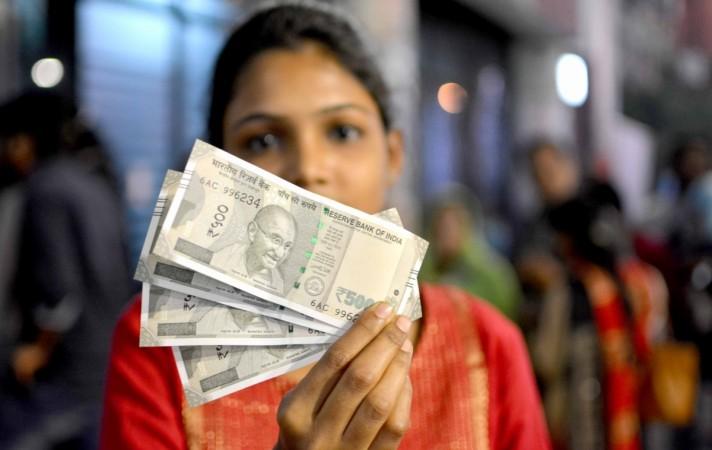
The Indian rupee hit a new low of 68.86 against the US dollar on Thursday, as foreign investors continue to sell their holdings in view of an imminent interest rate hike by the US Federal Reserve next month. The previous all-time low for the domestic currency was 68.85 on August 28, 2013.
On that day, the rupee experienced its biggest single-day fall in 18 years but gained later to close at 66.24.
Narendra Modi was voted to power in May 2014 when his BJP-led NDA swept the general elections, ousting the Congress-led UPA that remained in office for 10 years.
Earlier, on Thursday, the rupee opened 19 paise lower at 68.76.
Foreign institutional investors (FIIs/FPIs) have been on a selling spree in November, offloading debt and equities worth $3.18 billion, the Mint reported.
The fall is not confined to the Indian rupee alone.
"Asian currencies' drop to a seven-year low will probably deter regional central banks from easing monetary policies as the prospects of higher U.S. rates spurred capital outflows," Geojit BNP Paribas said in a note on Thursday morning.
The BSE Sensex closed at 25,860 on Thursday, down 192 points, or 0.74 percent. Top index losers were Tata Motors, Sun Pharma and Axis Bank.
"Continued weakness in rupee against dollar, last hour of expiry square-off and the disruptions in Rajya debate over demonetization have dragged the market. This phase of consolidation is likely to continue in the near-term given the domestic setbacks and losing strength of the EMs due to buoyant bond yield," Vinod Nair, Head of Research, Geojit BNP Paribas Financial Services, said in a note.
The BSE Bankex closed 1.45 percent, with the top losers being Kotak Mahindra Bank, Axis Bank, Federal Bank and IndusInd Bank.
State Bank of India ended with gains of 1.14 percent at Rs 261.70.









!['Had denied Housefull franchise as they wanted me to wear a bikini': Tia Bajpai on turning down bold scripts [Exclusive]](https://data1.ibtimes.co.in/en/full/806605/had-denied-housefull-franchise-they-wanted-me-wear-bikini-tia-bajpai-turning-down-bold.png?w=220&h=138)



